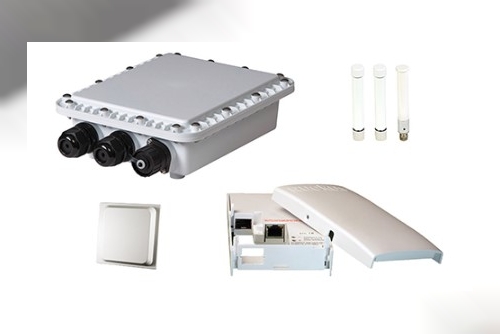In the quest for energy efficiency and comfort in our homes, tankless water heaters have emerged as a popular solution. Unlike traditional water heaters that store hot water in a tank, tankless models heat water on demand, providing numerous advantages that make them an appealing choice for homeowners. If you’re considering upgrading your water heating system, this blog will explore the benefits of tankless water heater installation, the installation process, and what you need to know to make an informed decision.
Understanding Tankless Water Heaters
Tankless water heaters, often referred to as "on-demand" water heaters, heat water directly without the use of a storage tank. When you turn on the hot water faucet, cold water travels through a pipe into the unit, where it is heated by either gas or electricity. As a result, you get a continuous supply of hot water without the limitations of a tank.
Key Benefits of Tankless Water Heaters
Energy Efficiency: One of the most significant advantages of tankless water heaters is their energy efficiency. Traditional water heaters continuously heat water, even when you’re not using it, leading to standby energy loss. In contrast, tankless heaters only operate when needed, which can lead to lower energy bills.
Endless Hot Water: With a tankless system, you’ll never run out of hot water. This feature is especially beneficial for large families or households with high hot water demand, allowing multiple showers and laundry loads to run simultaneously without a drop in temperature.
Space-Saving Design: Tankless water heaters are compact and can be installed in smaller spaces, such as closets or even mounted on walls. This versatility allows you to reclaim valuable floor space in your home.
Longer Lifespan: Tankless water heaters typically last longer than traditional units, often up to 20 years with proper maintenance. This durability can translate into long-term savings.
Reduced Risk of Leaks: Since tankless systems don’t store water, they eliminate the risk of tank leaks, which can cause significant water damage and require costly repairs.
Installation Process
Installing a tankless water heater involves several steps, and while some homeowners may consider a DIY approach, it’s advisable to hire a professional plumber for the job. Here’s what you can expect during the installation process:
1. Assessment and Planning
Before installation, a qualified plumber will assess your home’s hot water needs. This includes evaluating your current water usage, the number of fixtures that will require hot water, and the available space for the new unit. They will help you choose the right size and model based on your family’s demands.
2. Choosing the Right Location
The location of the tankless water heater is crucial for efficiency and ease of access. The plumber will identify a suitable spot, considering factors such as proximity to water fixtures and ventilation requirements, especially for gas models.
3. Removing the Old Unit
If you’re replacing a traditional water heater, the old unit must be removed first. This process involves disconnecting power and water supply lines, draining the tank, and carefully removing it from its location.
4. Installing the New Unit
Once the old water heater is out, the plumber will install the new tankless unit. This includes:
Connecting Water Lines: The plumber will connect the cold water inlet and hot water outlet to your plumbing system.
Gas or Electric Connections: If you’re using a gas tankless heater, the plumber will connect the gas supply. For electric models, they’ll ensure the electrical connections are properly wired.
Ventilation (for gas units): Proper ventilation is crucial for gas models to prevent carbon monoxide buildup. The plumber will install venting pipes as needed.
5. Testing and Final Adjustments
After installation, the plumber will test the system to ensure everything is functioning correctly. This includes checking for leaks, ensuring the temperature settings are appropriate, and verifying that hot water flows to all fixtures without delay.
6. Education and Maintenance Tips
Once the installation is complete, your plumber should provide you with information on operating your new tankless water heater and maintenance tips to keep it running efficiently. Regular maintenance, such as descaling and checking for mineral buildup, is essential to prolong the unit’s lifespan.
Factors to Consider Before Installation
While tankless water heaters offer many advantages, it’s essential to consider a few factors before making the switch:
Initial Cost: The upfront cost of a tankless water heater and installation can be higher than traditional units. However, the long-term savings on energy bills and extended lifespan often offset this initial investment.
Flow Rate: Tankless heaters have a specific flow rate, measured in gallons per minute (GPM). It’s important to choose a unit that can meet your household’s peak hot water demand. Discuss this with your plumber to ensure you select the right model.
Energy Source: Decide whether you prefer a gas or electric model. Gas heaters typically heat water faster and may be more energy-efficient, while electric models are easier to install and may have lower installation costs.
Maintenance: Although tankless water heaters require less maintenance than traditional units, they still need periodic servicing. Factor this into your budget and schedule regular checks with a qualified plumber.
Conclusion
Tankless water heaters are an excellent choice for homeowners looking to enhance their energy efficiency and comfort. With endless hot water, space-saving designs, and reduced energy bills, they are becoming increasingly popular.
When considering installation, it’s crucial to work with a qualified plumber who can assess your needs, recommend the right model, and ensure a seamless installation process. By understanding the benefits and considerations involved in tankless water heater installation, you can make an informed decision that will serve your household well for years to come.
If you’re ready to make the switch, consult with a plumbing professional today to explore your options and enjoy the comfort and efficiency of a tankless water heater!
Business Name - Green House Plumbing and Heating Bellevue Address - 13330 SE 30th St, Bellevue, WA 98005, United States Phone - +1 425-999-9417 Website - https://greenhouseplumbing.com








 Rent A Cozy Fully Furnished Two Room Apartment in Bashundhara R/A
Rent A Cozy Fully Furnished Two Room Apartment in Bashundhara R/A



